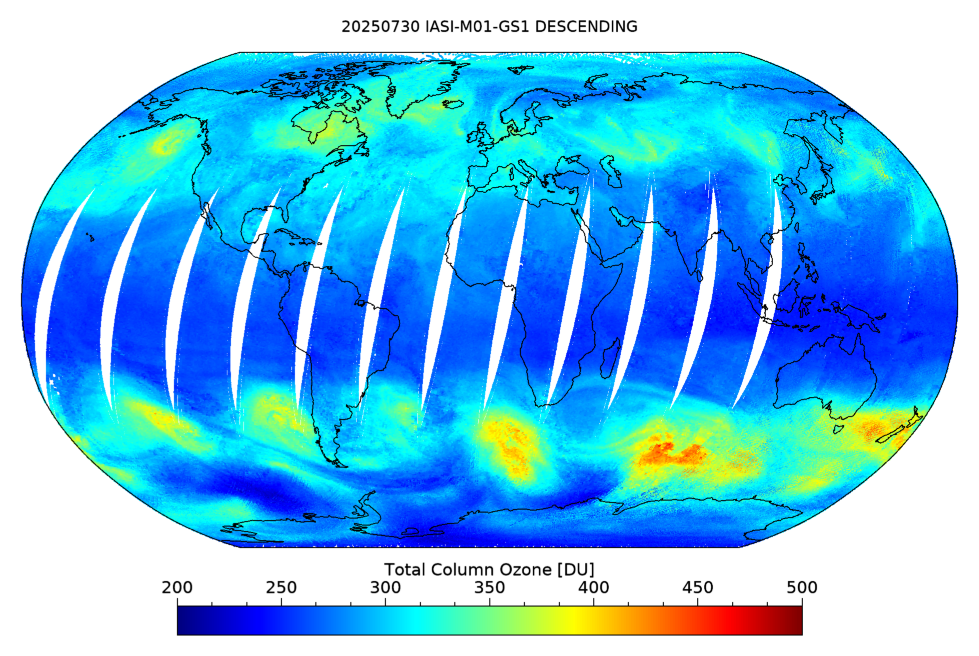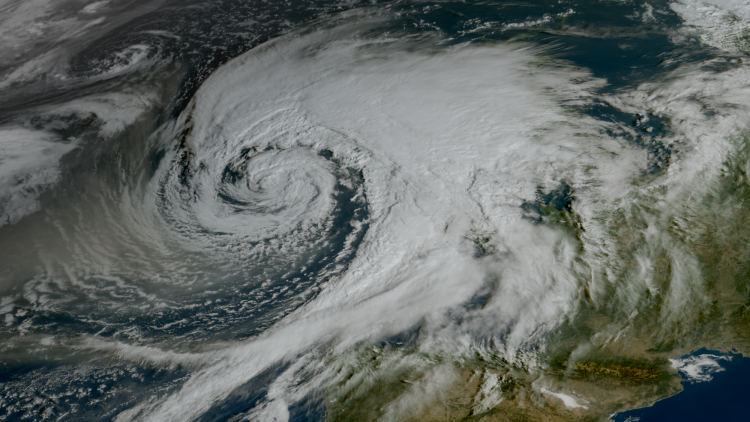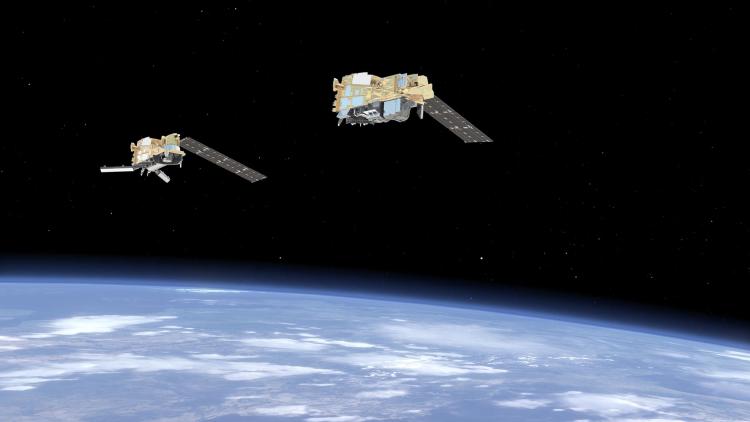Spotlight on an instrument: IASI-NG
This infrared sounder will provide observations crucial for numerical weather prediction models, monitoring of atmospheric composition, and more
With the launch of the Metop Second Generation A1 satellite imminent, we take the opportunity to highlight the expected benefits of one of its valuable instruments.
The atmosphere in three dimensions
A hyperspectral sounder, IASI-NG detects wavelengths beyond those in the visible range, making it possible to detect features, such as temperature and water vapour, as they vary with altitude.
“This instrument is a sounder, which means that it gives information about the atmosphere in three dimensions,” said Dr Dorothée Coppens, EUMETSAT Hyperspectral Competence Area Manager.
“IASI-NG will lead to an improvement in numerical weather prediction models thanks to better spectral resolution, which means the instrument can better differentiate between different wavelengths, and less noise, or unwanted information. We already see that IASI has been very important for these models, so with IASI-NG’s improvements, we expect this new instrument will result in even more accurate weather forecasts.”
Dr Nadia Fourrié, a researcher at Météo France, the French meteorological agency, expects IASI-NG to be one of the most accurate and detailed sources of information on temperature and humidity for Météo France meteorologists when predicting storms. In an analysis assessing the impact on the forecasting error of assimilating IASI-NG into weather prediction models when developing four-day forecasts, she found that the forecasting error in temperature and humidity decreased with the addition of IASI-NG observations.
“When we added IASI-NG into models that already assimilated IASI observations, we saw positive impacts on the accuracy of predictions of temperature and humidity, and, to a lesser extent, wind speed, across the globe up to a height of 10km,” said Fourrié.
Increased forecasting skill will enable meteorologists to issue severe weather warnings that are more accurate, which is especially crucial as climate change is causing an increase in the severity and frequency of extreme weather events.
Better air quality monitoring
Because of its improved spectral resolution and lower noise, as compared to IASI, IASI-NG will be able to more precisely detect around 40 atmospheric gases up to 70km above the Earth’s surface.

Credit: Jonas Wilzewski, Stefan Stapelberg, and Marc Crapeau
“Ammonia is one of the pollutants that IASI-NG will measure,” said Coppens. “It is a major pollutant in Europe, with eighty percent of emissions coming from agricultural activities and fertiliser production. It is, therefore, a very important gas to monitor.
“We will also be able to follow carbon dioxide, methane, and gases from volcanoes such as sulphur dioxide. For atmospheric gases that are tricky to measure, if you have less noise, then it is easier to measure them. Also, for the climate data record, you need to have long-term, stable measurements, so IASI-NG will make valuable contributions to climate monitoring.”
IASI-NG observations of pollutants and greenhouse gases will be important for the monitoring of the climate and atmospheric chemistry. They will complement the observations from several other instruments also on board Metop-SGA1.
“In terms of trace gas measurements, there are also synergies between IASI-NG and the Copernicus Sentinel-5 mission,” said Dr Rosemary Munro, EUMETSAT Polar System – Second Generation Programme Scientist.
“Each instrument does this by sampling a variety of atmospheric gases and, in some cases, both instruments sample the same gas but are sensitive to a different height range in the atmosphere. IASI-NG also contributes information on aerosols, in particular, measurements of dust, so it can be used together with the 3MI instrument, which focuses completely on measuring aerosols, adding complementary information.”
Reference mission for calibration
In May 2024, following an interruption in service, the Flexible Combined Imager instrument on board the Meteosat Third Generation – Imager 1 satellite was able to resume delivery of data. The interruption was caused by a malfunction with the calibration and obturation mechanism, used to calibrate and monitor the health of the instrument.
A team from EUMETSAT collaborated with experts from Telespazio Vega to develop an effective solution. The Mission Integrated Calibration Monitoring and Inter-Calibration System (MICMICS) is a software toolbox that makes it possible to access and combine all calibration tools for in-orbit satellites. At the heart of MICMICS are IASI measurements – because the three IASI instruments, on board Metop-A, -B, and -C satellites, are recognised as the worldwide reference satellite instruments, their excellent calibration could be transferred to the Flexible Combine Imager.
“IASI-NG will play an important role as a calibration reference mission, eventually taking on this role from IASI,” said Munro. “And as stable and precise as IASI is, we expect IASI-NG to not only continue but even improve upon IASI measurements.”
Coppens is looking forward to the successful launch of Metop-SGA1 and, further down the line, to the delivery of IASI-NG data.
“I am very proud to work on this instrument – it is very exciting, actually. My goal was to have work that is important and helpful for people, so with this instrument I have the feeling that I am helping with human health in some way.”
Author:
Sarah Puschmann



